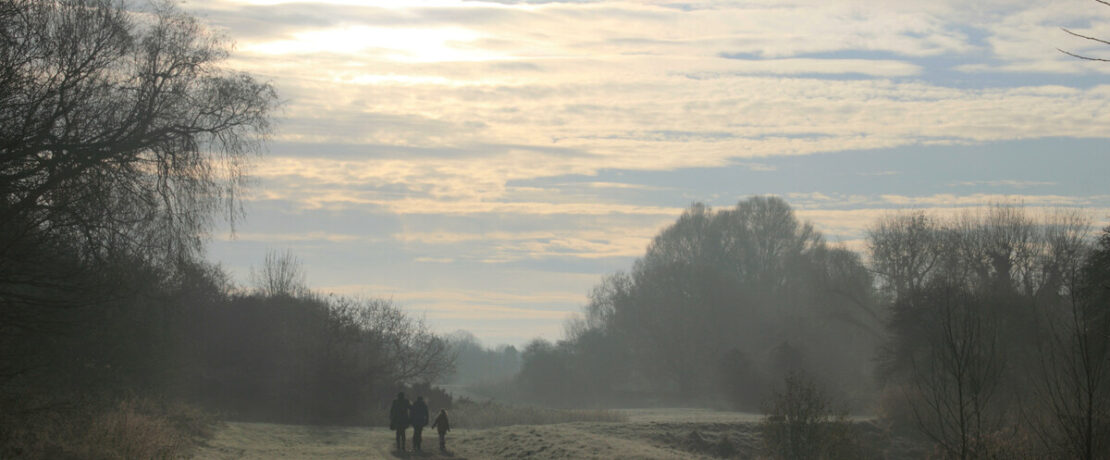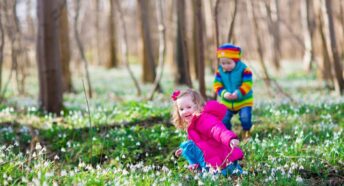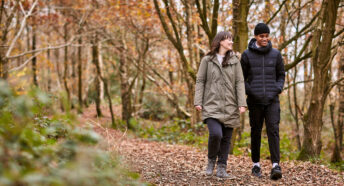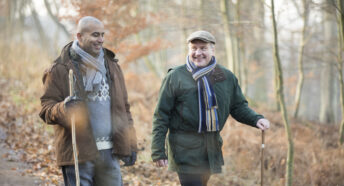Coming to the countryside near you: wildlife in February
Spring is just around the corner! Nature writer Alexandra Pearce-Broomhead kicks off a new regular contribution to this website as she predicts the wildlife we can look forward to spotting in February.
Despite celebrating the solstice in December, sometimes the depths of winter can’t really be felt until February. The nights are still long and often finish with frosted mornings. The medieval-named ‘snow’ or ‘ice’ full moon falls early in the month, reminding us of the potential weather ahead. February tends to be the coldest month in England; average temperatures are around 4 degrees, but bitter winds can make it feel much colder.
Yet February isn’t bleak. Its arrival brings with it the gentle awakening of the earth and the small signs that we are on the cusp of spring. Badgers birth cubs in setts lined with dry grasses beneath the frost-bitten soil, hazel trees are decorated with garlands of catkins. Sparrows, blue tits, and long-tailed tits begin to gather nesting materials in anticipation of the warmer days ahead.
Based where I am in the south west, we often see signs of the season a little earlier than the rest of the country. So, arctic vortexes permitting, here’s what I’m starting to see in Cornwall so is worth looking out for in your area as the month progresses.
Scarlet elf cups
We tend to associate fungi with autumn, but the scarlet elf cup ‘blooms’ in shades of red and orange in winter, bringing colour to the woodland floor during an otherwise muted time. Found up and down the country, although not considered common, scarlet elf cups prefer damp spots, growing in little clusters beneath moss and leaf litter. They can also be spotted on decaying sticks and branches, typically on willow, hazel, or elm trees, especially on the banks of streams and rivers.
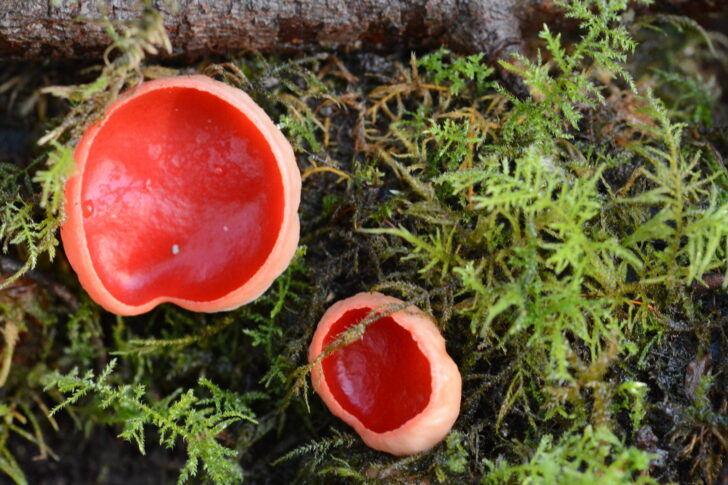
While scarlet elf cups provide a good food source for rodents and invertebrates, there is some debate about their edibility for us humans. They’re not considered to be toxic in small amounts but are not reported to be particularly tasty when eaten raw. When cooked they are said to have an earthy taste and are a good addition to stews and stir fries.*
Their common name derives from old folklore that suggests wood elves would rise early, unseen, to drink morning dew from the cup-shaped body.
*we don’t recommend picking or eating any fungi without the guidance of an expert.
Short-eared owls
While short-eared owls live in some areas of northern England all year round, in winter they arrive on our shores from Scandinavia, Russia and Iceland, expanding into all counties in England, boosting their numbers from the British breeding populations of around 600-2000 pairs. Their distinctive yellow eyes lined with kohl-like feathers and mottled brown bodies with white underwings make them instantly recognisable as they fly low over wetlands, heathland, moorland, or coastal marshes as they hunt for non-hibernating small mammals such as voles, mice, and shrews.
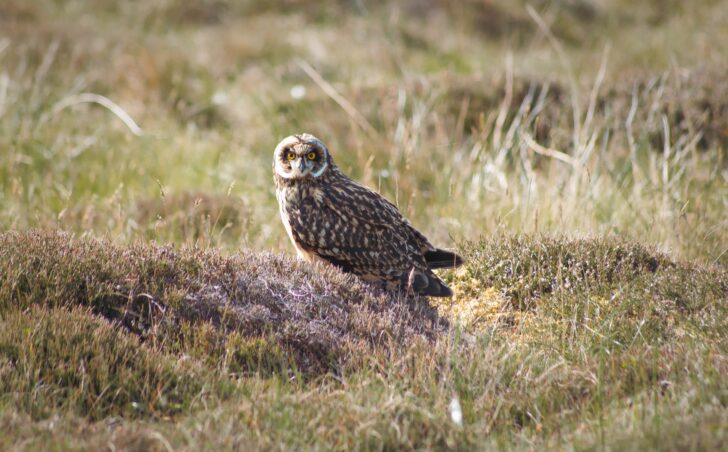
Short-eared owls are one of the few owls that can be seen flying during the day, although dawn and dusk are still their most active periods of the day, and you might even be lucky enough to hear their haunting and rhythmic hooting. Sadly, these owls are amber listed due to declining populations. Changes to habitat, persecution and egg predation by foxes, corvids (like crows and magpies), and dogs (they nest on the ground) are all threats to these beautiful birds of prey.
Primroses
While a large amount of focus during February is the blooming of the introduced species snowdrops and winter aconites, primroses are one of the first native wildflowers to bloom in significant numbers. In Cornwall, they began to peep during December and January, but during February they flower in swathes in gardens, parklands, and woodlands.
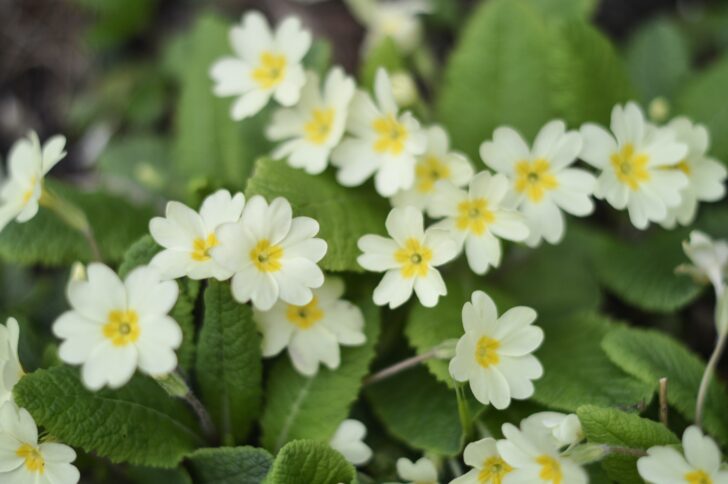
The name primrose is derived from the Latin word ‘primus’ meaning ‘first’ and the plants with their thick and wrinkled leaves develop from shoots in mid-winter before the buttercream flowers with yellow centres blossom. These flowers are important as an early food source for pollinators such as awakening bees and small tortoiseshell and brimstone butterflies.
They are also ancient woodland indicators and the sight of them growing in numbers in woodlands could suggest that nearby trees are more than 400 years old.
Primroses symbolise happiness, warmth, and love. The Victorians would gift each other the yellow flowers as a sign of love and would decorate their doorsteps in elaborate primrose displays to signify the coming of spring.
Common toads
Common toads wake up during February. They will have spent their winters tucked away from the cold, hibernating in mud at the bottom of ponds, beneath leaf litter, or under log piles. But as mating season dawns, they will leave their place of safety and make their way to water to breed, ambling along at night back to the large, deep ponds they were born in, arriving en masse to mate and lay string-necklaces of eggs draped around vegetation beneath the water.
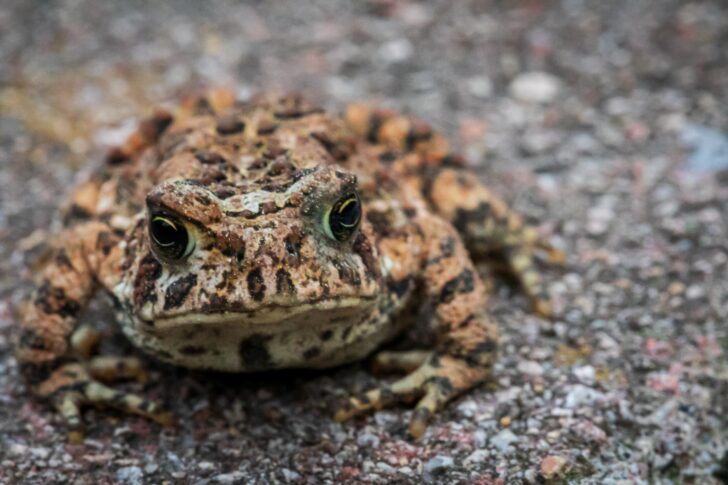
Male toads will sometimes come across a female on the journey and will climb upon her back, hitching a ride to the water. Those toads will pair up before they reach the waterside, however individuals who are not fortunate enough to find a partner on route will have to join the fray, with males fighting over females in the hope of being the lucky one.
Despite the name ‘common’, these toads are getting scarcer. Their population has dropped by 65% since 1985, thought to be due to habitat fragmentation, an increase in traffic, and changes to agricultural practices.
Coming soon
There should be plenty of opportunities to see wildlife in February in your local countryside. Be sure to wrap up, take it slowly and listen out for critters. If you manage to get any wildlife snaps, get in touch with us on Facebook, Twitter or Instagram. We’d love to share them! Check back next month and find out what Alex is predicting for March.
About the author
Alexandra Pearce-Broomhead is a writer and occasional Guardian Country Diarist from Cornwall. She writes about nature and place, and the human relationship with both. Her work has also been featured on BBC Wildlife and BBC Countryfile.
